Ever wondered if you can enhance the beauty of your tung oil-finished wood with a stain? Dive in to unlock the secrets and ensure a flawless finish!
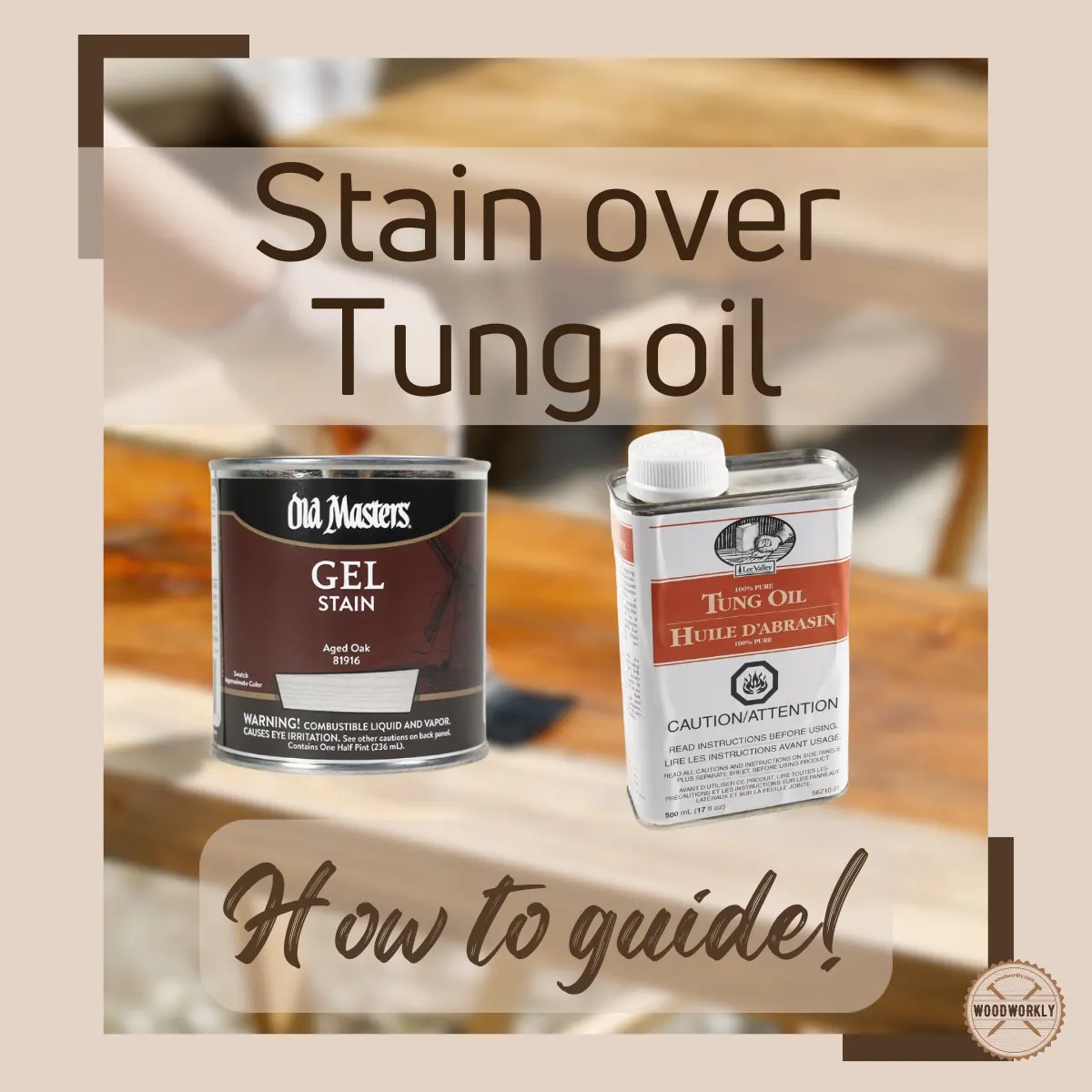
Stains are commonly applied to wood to alter or enhance its color, providing a modest level of protection.
In contrast, tung oil is primarily utilized as a wood finish, offering substantial protection against various elements.
Typically, tung oil is applied over a wood stain, as it provides superior protection compared to the stain alone.
But have you ever thought of using an uno reverse card which means the approach of applying a stain on top of tung oil?

I did that during mid-2020 and gained promising results thanks to the experts who advised me since my dining table was already protected with Tung oil and I wanted to change the shade of it.
Let me share with you how I did and what did experts said about this!
So, let’s find out, Can you stain over Tung Oil?
Yes, you can stain over tung oil, but it is crucial to wait until the tung oil has fully cured, which can take up to 30 days. Lightly sanding the surface before applying a gel stain or pigmented wiping stain ensures better adhesion and an even finish.
But there’s a lot more to know about staining over Tung oil finish.
In this article, I’ll dive into topics like can you stain over Tung oil, can you Gel stain over Tung oil, apply water-based stain over Tung oil, and how to apply stain over Tung oil properly.
Furthermore, I’ll answer some frequently asked questions as well.
Let’s get going!
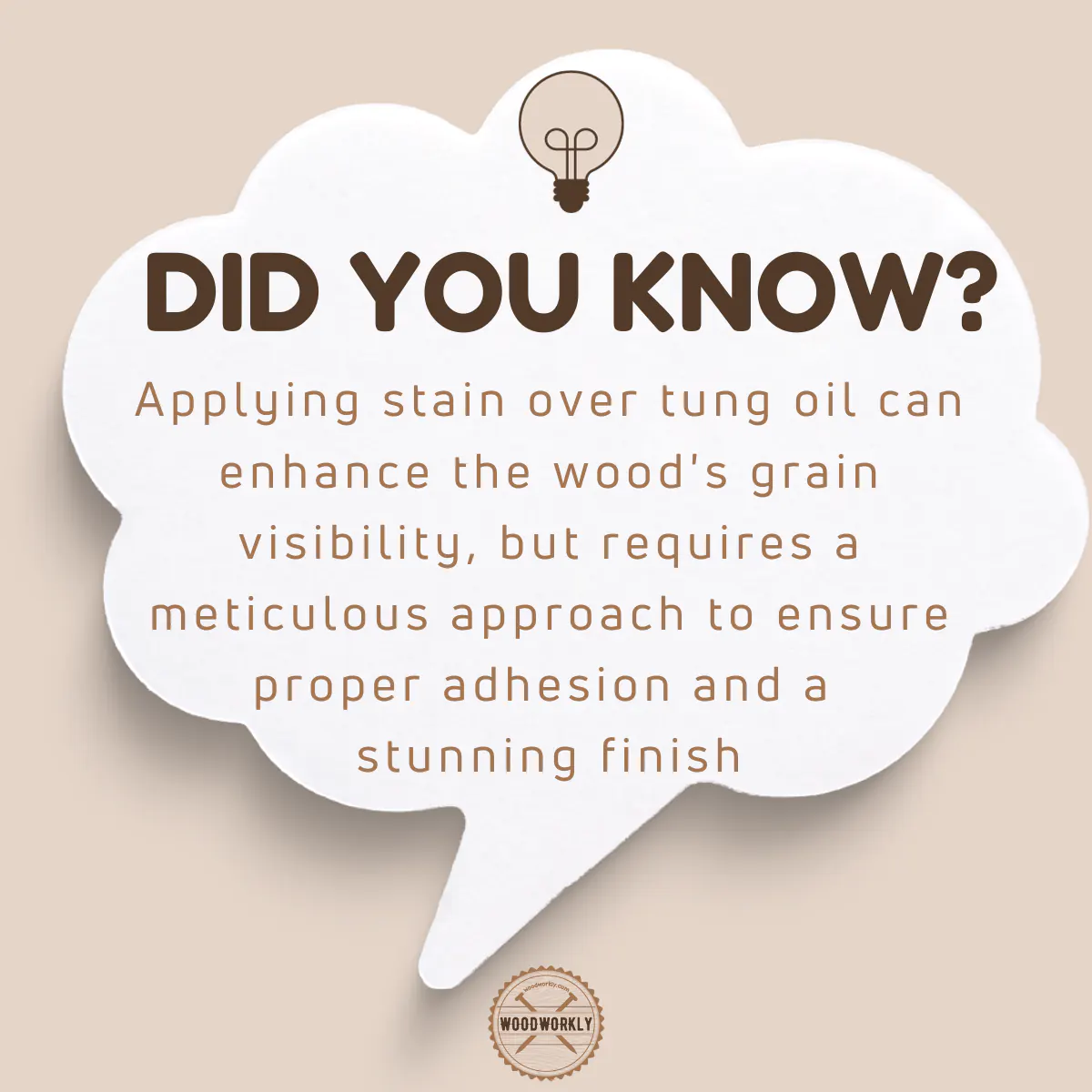
Can You Stain Over Oiled Wood?
You can stain over oiled wood but it won’t be much effective since most of the wood stains are penetrating and they’re unable to penetrate the wood surface due to the Tung oil barrier.
Once you apply Tung oil over wood, it will penetrate wood fibers and make a protective coat over the wood surface.
Tung oil will polymerize into a thick coat upon oxidation with atmospheric oxygen.
Once this polymerized Tung oil coat is dried and cured, moisture, liquids, and oils are unable to pass through it.
Nothing can pass through Tung oil!
This is why Tung oil is considered a top-tier wood sealer and finisher.
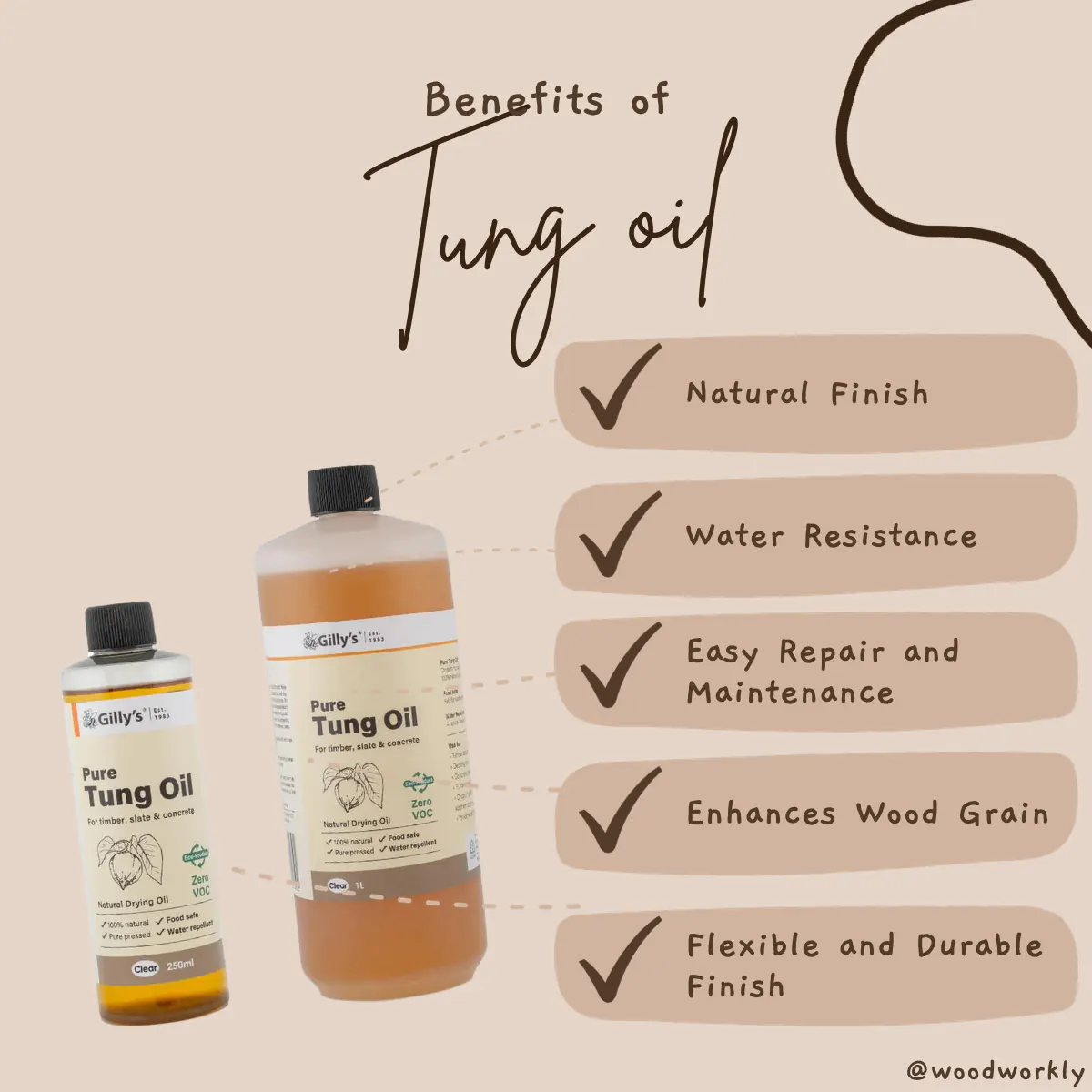
It stops moisture from penetrating inside of the wood which helps to keep wood from rotting and decaying.
Applying Tung oil is super useful for outdoor furniture to get protected from environmental elements such as humidity, high moisture environments, and weather elements.
Now I think you can get a clear picture of what will happen if we apply stain over cured and hardened, Tung oil finish. The stain won’t go in.
When the stain finds hard to penetrate the wood surface, it won’t spread evenly over the surface and may cause lots of wood stain issues and mistakes such as forming blotches, tacky and splotchy surfaces, and more.
Staining over an oiled finish like Tung oil can ruin the wood’s appearance and you probably won’t get the even color wood you are looking for.
It will create a mess with a frustrating outcome.
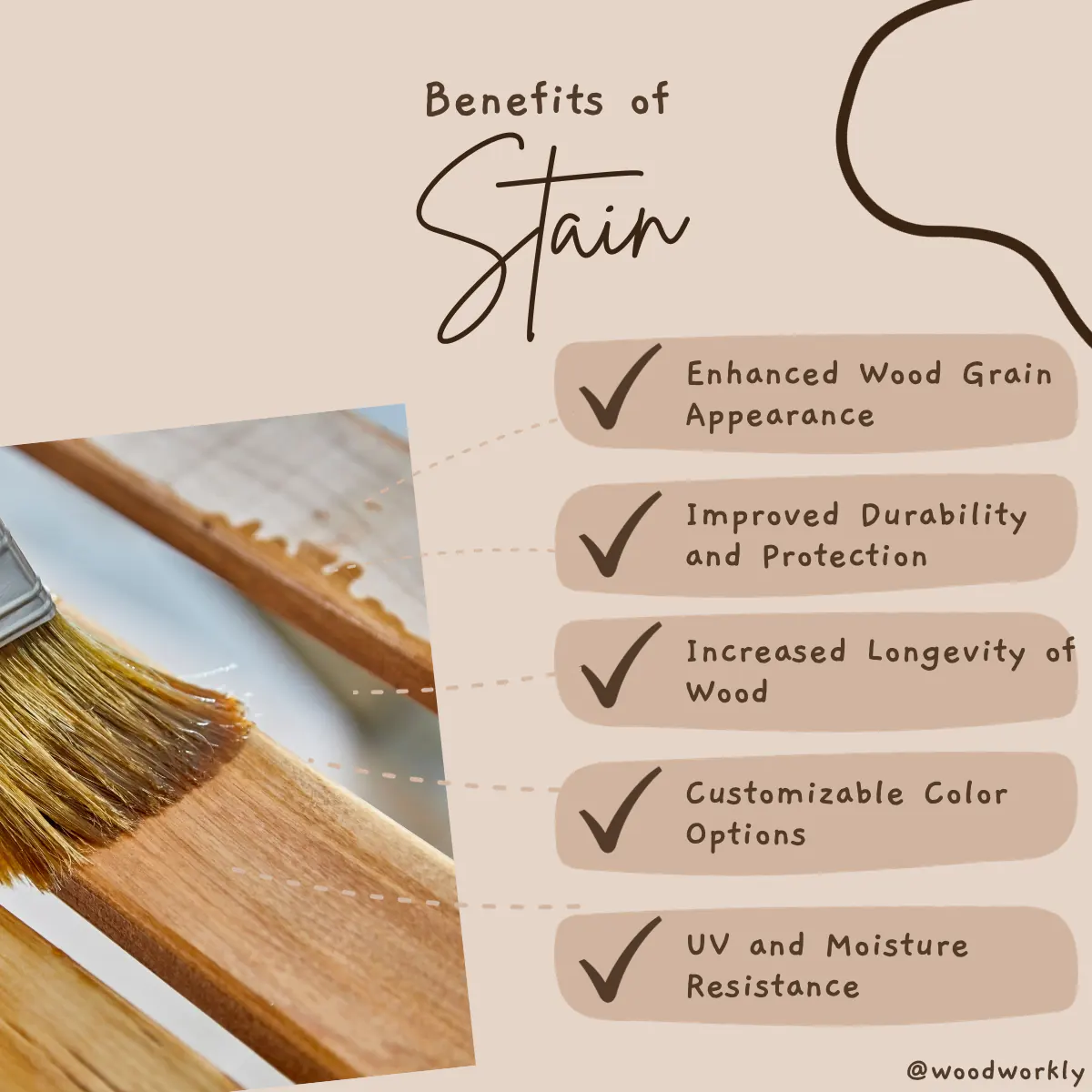
Methods to Apply Stain Over Oiled Wood
But what if I told you there are methods of applying stain over oiled wood? They are,
- Apply stain over the non-curing oil finish
- Apply Gel stain over the oil finish
Let’s discuss each of the above methods in brief.
1. Apply Stain Over Non-Curing Oil Finish.
Non-curing oil finish does not harden or polymerize like Tung oil. They sit and stay on a wood surface forming a wet surface.
You can apply any stain over a non-curing oil finish without forming blotches or splotches.
Mineral oil is a non-curing oil that you can apply stain over it without forming a mess.
But unfortunately, Tung oil is not a non-curing oil. It hardens and solidifies on the surface and blocks stain penetration to the wood.
2. Apply Gel Stain Over Oiled Finish
You can apply Gel stain over any oiled finish since Gel stain won’t penetrate like other stains.
It sits on the surface and provides even color as you wish.
We’ll talk about using Gel stain over Tung oil further below.
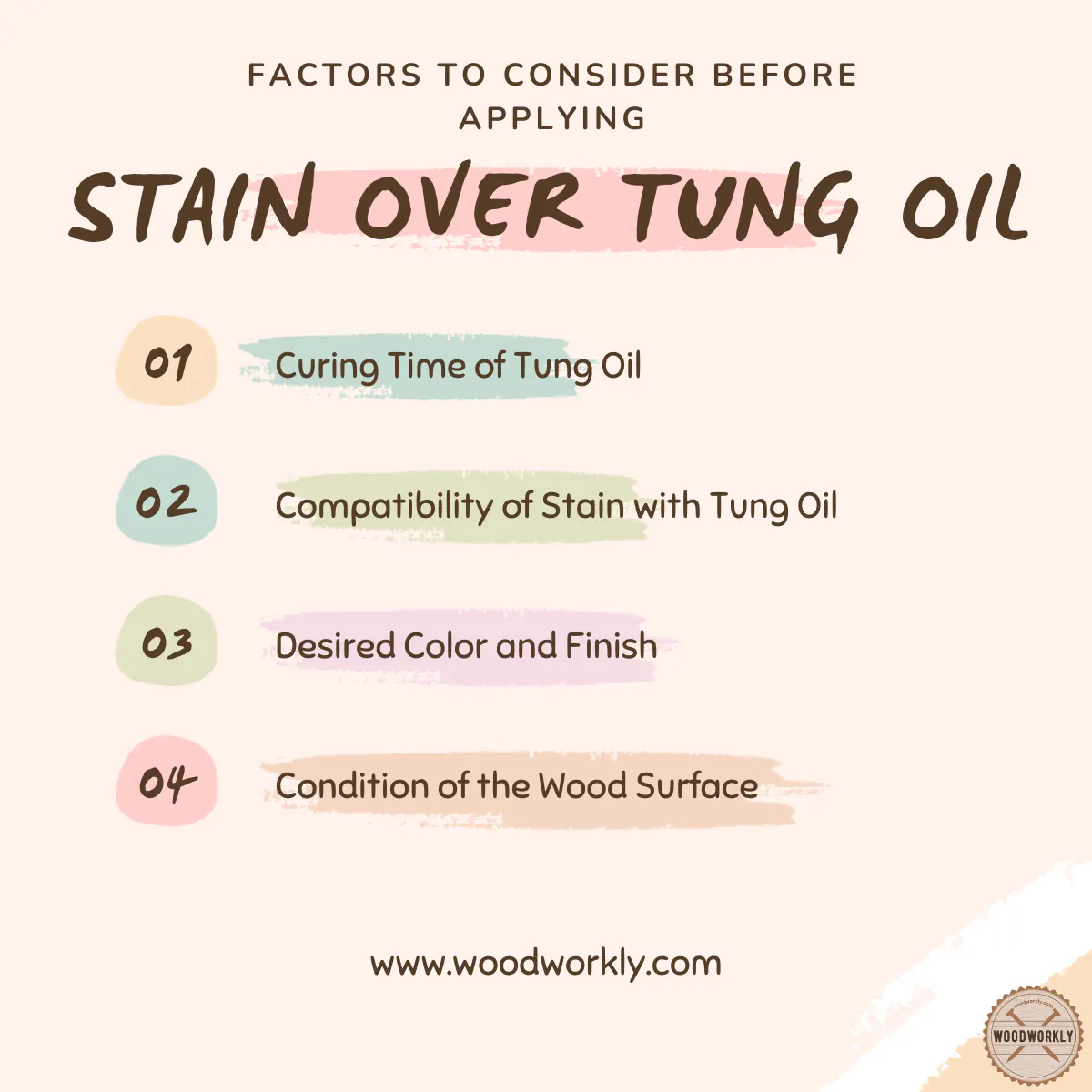
So, let’s see whether can we Gel stain over the Tung oil finish.
Can You Gel Stain Over Tung Oil?
Yes, you can apply a wipe on the Gel stain over the Tung oil finish since the Gel stain won’t penetrate the wood surface like other stains.
It sticks and sits on a Tung oil finish by forming an even finish.
Gel stain works well with any kind of oil finish. You don’t have to worry about how hard your finish is or whether Gel stain is able to make an even finish by penetration.
Gel stain has the ability to stick well onto the hardened polymerized Tung oil coat and it will spread evenly all over the wood forming a no blotchy smooth and nice surface.
But I highly recommend you scuff sand the Tung oil finish before applying the Gel stain since light sanding makes the Tung oil coat bit coarse and it is helpful for the Gel stain to stick better.
Therefore, do the light sanding before Gel staining over Tung oil.
So, let’s have a look at the best Gel stain finishes to put over Tung oil.
Best Stain To Put Over Tung Oil
- Minwax Gel stain
- General Finishes Gel stain
- Varathane Gel stain
- Unicorn Spit Gel stain
- Retique It Gel stain
Above Gel stains work well over Tung oil or any other oil finish with no issues at all.
So, let’s see how to stain over Tung oil without making any mistakes.
Here’s what you need to apply stain over Tung oil,
Supplies You Will Need to Stain Over Tung Oil
- Gel stain can
- Tung oil
- Paintbrush
- Lint-free tack cloths
- Rags or clean cloths
- Fine grit sandpaper (320 grit or more)
- Rubber gloves
- Face mask
Check out the Best Brushes For Staining Wood!
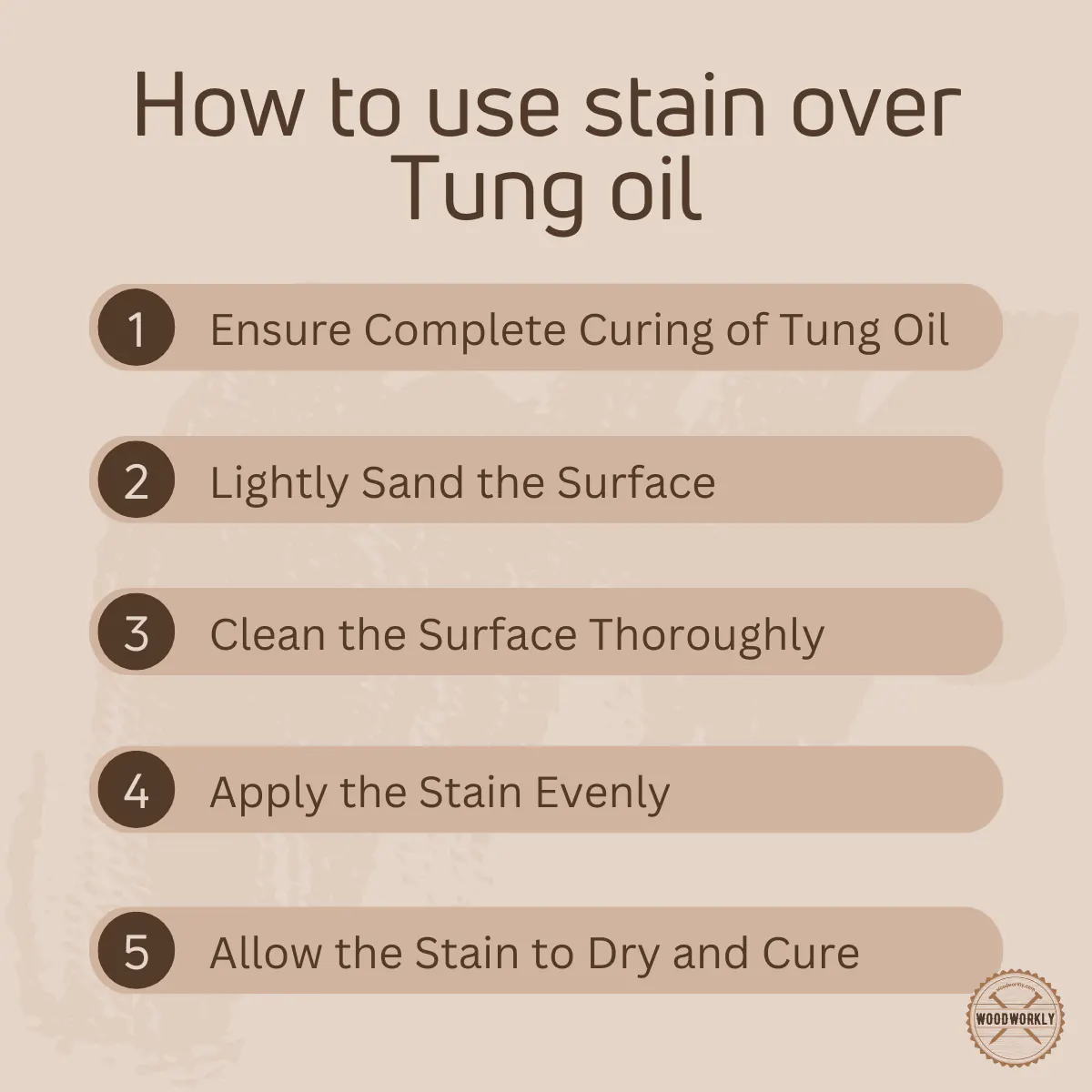
How To Apply Stain Over Tung Oil?
Applying stain over Tung oil should be done with good focus since stain loves to work with untreated wood more than finished wood.
I will guide you step by step until you make succeed.
Here is the procedure of staining over Tung oil,
- Prepare the wood surface
- Clean and sand the surface
- Apply Tung oil
- Let the finish dry and cure
- Sand the Tung oil finish
- Apply Gel stain
- Let the stain dry
In order to get a good understanding of staining over Tung oil, let’s discuss each of the above steps in detail.
1. Prepare The Wood Surface
First, you need to take the woodwork or furniture that you’re going to finish to a well-ventilated area for good air circulation and efficient drying when finishing.
Having good air circulation is helpful to get protected from the harsh chemicals that release from stain and Tung oil.
Wear gloves and a mask before starting the finishing project.
2. Clean And Sand The Surface
Now clean the whole wood surface using clean rags or cloths to remove dust and dirt. Having dust or dirt when finishing, ruin the wood’s appearance and cause surface blotchiness.
After cleaning the whole wooden surface properly, sand the entire surface to eliminate surface randomness, and bumps and smoothen the surface.
Sand along the direction of the wood grain for better absorption of Tung oil. Plus, it prevents the wood surface from scratching when sanding.
Sanding helps Tung oil to penetrate well into the wood surface and to spread evenly with no issues.
Sanding makes the base attach Tung oil.
Sanding helps to open the porous structures of the wood surface and that is helpful for better absorption of Tung oil into the wood.
After sanding the wood properly, clean the sawdust and other residue using a proper dust collection pipe system or wipe the surface with a clean cloth.
Sawdust needs to be removed permanently since it is so hard to remove them after the application of Tung oil due to adhesion.
Now your wood surface is ready to take on Tung oil.
3. Apply Tung Oil
Stir the oil well using a fork before application. make sure not to let air bubbles trapped inside the oil when stirring.
Then pour a sufficient amount of Tung oil into a container. You can add mineral spirits or turpentine to reduce the thickness of Tung oil for ease of application.
Apply 1:1 Tung oil to thinner ratio.
Plus, thinning Tung oil before application helps it to dry faster when sitting on the surface.
Then, take the lint-free tack cloth and saturate it by dipping it in Tung oil. Or you can use a paintbrush to apply Tung oil on large surfaces.
Apply Tung oil evenly along the wood grain for good absorption. Tung oil penetrates deep into the wood and the excess oil will remain on top of the surface to form the coat.
Apply Tung oil all over the surface without missing any spots and let the first coat of Tung oil dry for about 24 hours.
Let the Tung oil dry and cure overnight.
Next day, check the dryness of the Tung oil finish. Never apply another coat of Tung oil before the previous one dries completely since that can lead to never drying tacky surface.
When the first coat of Tung oil is dried completely, do the light sanding to smoothen the surface and to improve the sticking ability of the surface for the next coat.
Or you can use ultra-fine steel wool to smoothen the surface between coats.
Then apply the second coat of Tung oil along the wood grain.
Likewise, repeat the same procedure for at least 4 to 5 coats of Tung oil to build up excellent protection over wood with a beautiful appearance.
Let each coat dry for 24 to 72 hours between coats.
Apply thin coats of Tung oil for fast and efficient drying.
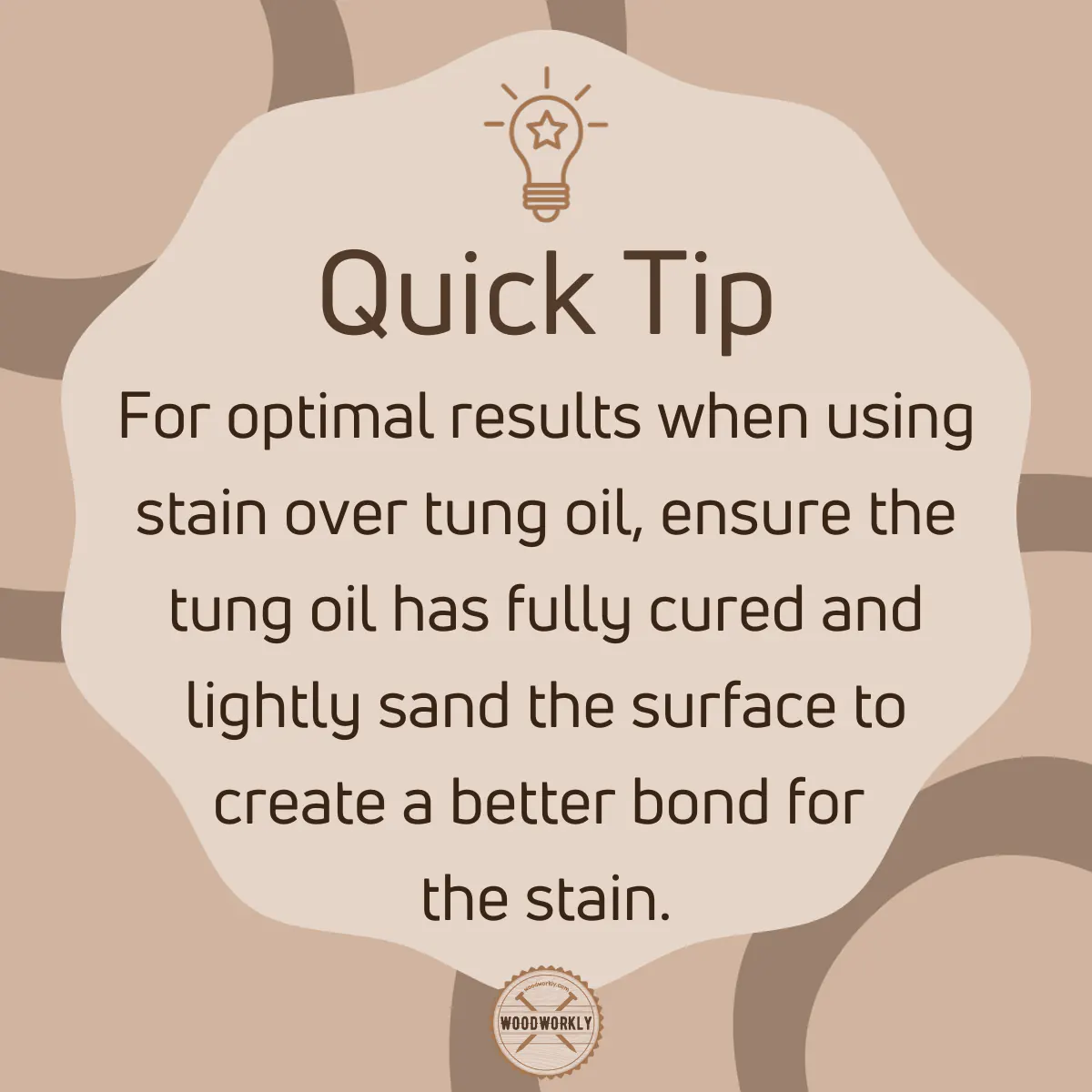
4. Let The Finish Dry And Cure
After applying the final coat of Tung oil, let it dry and cure for at least 72 hours.
During this period Tung oil dries and reacts with atmospheric oxygen to initiate a polymerization reaction.
As a result of this chemical polymerization reaction, the topcoat of Tung oil solidifies, hardens, and makes a waterproof durable finish over the wood surface.
This protective barrier of Tung oil protects wood from moisture, humidity, and rotting.
When the finish is fully cured, you’re good to go for the staining step.
Note: If your wood furniture or woodwork is already finished with Tung oil and you’re willing to apply stain over the existing Tung oil finish, you can skip the above 3, or 4 steps and start from step 5 onwards.
5. Sand The Tung Oil Finish
Before applying stain over the Tung oil finish, you should do the scuff sanding to create ridges and scars on the Tung oil finish.
Those scars and ridges help the stain to soak into the finish. That’s why sanding is recommended before staining any surface.
Sanding improves the adhesion between the Tung oil finish and the wood stain. Therefore, sanding is a must before staining.
But make sure only to do light scuff sanding because sanding with coarse grit sandpaper can damage the existing Tung oil finish which breaks the protection of the wood surface.
Once you’re done with scuff sanding remove sawdust, and dust before staining since having imperfections breaks the adhesion abilities of Tung oil and wood stain.
Sanding helps the Gel stain to stick and sit well on the Tung oil finish. This is one of the most essential steps in staining over Tung oil finish.
6. Apply Gel Stain
Once you’re done with scuff sanding and cleaning you’re surface is super ready for stain.
Apply wood stain all over the surface along the direction of the wood grain using a paintbrush.
Applying along the wood grain direction helps the wood stain to spread evenly over the wood.
Gel stain doesn’t absorb into the wood like other stains. It just sticks to the surface and sits there to color up the wood evenly.
Gel stain works well with any kind of wood finish. You don’t need to be worried about its absorptions since it doesn’t penetrate.
Gel stain is the best stain over a Tung oil finish.
Apply thin coats of Gel stain to spread evenly and for fast drying between coats.
Apply a maximum of 1 to 2 coats of Gel stain to give your preferred color to the wood.
7. Let The Stain Dry Completely
After applying the wood stain let it dry for at least 48 to 72 hours.
Staining over Tung oil may take more time to dry than staining over untreated wood since wood stain loves to work with untreated wood.
But with Gel stain, you’ll be able to get the perfect protective and attractive finish as you wish with almost zero wood stain mistakes.
Once the stain is fully dried you can use the woodwork or furniture with no issues.
That’s how you should do the staining over the Tung oil finish without making a mess.
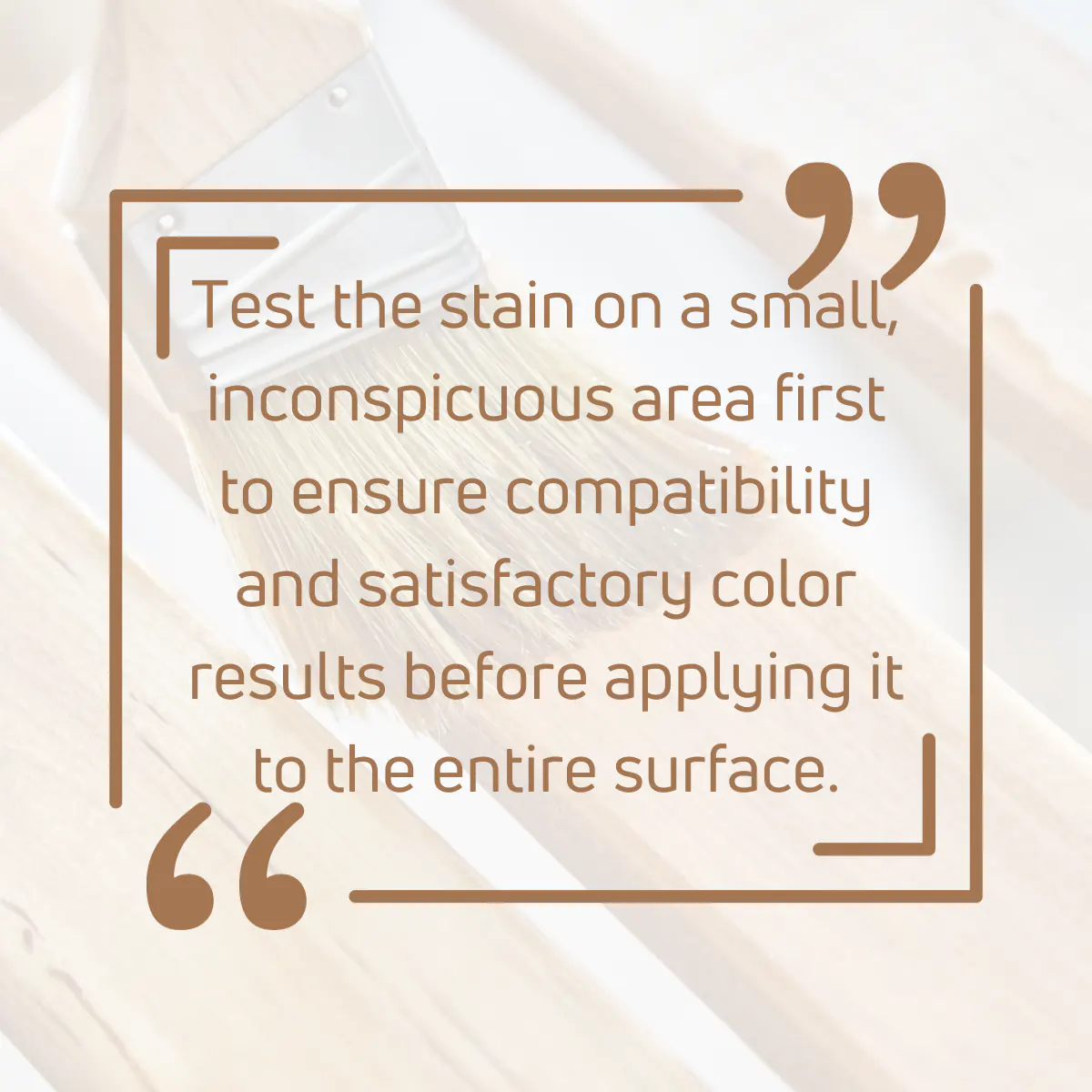
Can You Apply a Water-Based Stain Over Oil?
Never apply a water-based stain over an oil finish since the water-based stain is a penetrating stain and the oil barrier won’t let the stain penetrate the wood.
Therefore, the water-based stain does not adhere well to the oil finish, and you’ll probably end up with an uneven stain with blotches and streaks.
Select Gel stain over the water-based stain to stain over Tung oil since Gel stain has the ability to sit and attach to the previous finish without penetrating.
Never use a water-based stain over an oil-based finish since they’re incompatible with each.
That’s it, folks! Now you know the perfect in detail answer to the burning question, can you stain over Tung oil?
Yes, you can. But only with Gel stain. “wink”!
Can You Tung Oil Over Stain?
Yes, you can put Tung oil over the stain. Apply thin coats of Tung oil for better absorption. Tung oil makes a protective coat over wood and stain to protect the wood from weather elements like moisture, water damage, and rotting.
Tung oil is able to apply over wood stains. Apply 4 to 5 coats of Tung oil for a better finish.
When the Tung oil is hardened, it reacts with outside air and forms a polymerized solidified layer which prevents moisture from penetrating.
Do the light sanding between Tung oil coats and let each coat dry for at least 48 hours.
What Finish Can You Put Over Tung Oil?
Since Tung oil is an oil-based finish, you should always put an oil-based finish over Tung oil.
Water-based stain or sealer won’t adhere to the Tung oil and won’t provide the results you want.
Here are some of the best finishes you can put over Tung oil,
- Polyurethane
- Spar varnish
- Gel stain
- Polycrylic
- Shellac
- Lacquer
- Furniture wax
Does Tung Oil Turn Wood Yellow?
No, Tung oil does not turn wood yellow over time. Tung oil gives a clear finish that keeps the same color for a long time.
Tung oil won’t discolor like other oil-based finishes.
Most oil-based finishes like Linseed oil, varnish, and polyurethane yellow over time. But Tung oil doesn’t.
That’s the benefit of using Tung oil over other finishes.
But you need to give proper maintenance to the Tung oil finish by applying the finish at least once per year to keep it as fresh as new for a long time.
Let’s answer some frequently asked questions as well.
FAQs
Can I apply stain directly over tung oil?
It is not advisable to apply stain directly over tung oil, especially if the tung oil has fully cured, as the stain may not adhere properly or penetrate the wood evenly.
Do I need to sand the surface before applying stain over tung oil?
Yes, it is recommended to lightly sand the surface to create a better bonding surface for the stain and to remove any remaining tung oil residue.
Will the color of the tung oil affect the final stain color?
Yes, the existing tung oil on the wood can affect the final color of the stain, potentially making it appear darker or altering the hue.
Is there a risk of the stain not adhering properly over tung oil?
Yes, there is a risk of adhesion issues when staining over tung oil, which is why proper surface preparation and choosing the right type of stain are crucial.
What do I do if the stain is not adhering or looks blotchy?
If the stain is not adhering properly or looks blotchy, you may need to remove the stain and tung oil completely, sand the surface, and start the finishing process again.
Can I apply a topcoat over the stain and tung oil?
Yes, once the stain has dried and cured, you can apply a compatible topcoat to protect the finish and enhance durability.
Did I cover all you wanted to know about: Can You Stain Over Tung Oil?
In this article, I deeply discussed, can you stain over Tung oil, how to stain over Tung oil properly and what is the best type of stain you should go to put over the oil finish, and a lot more.
You can stain over Tung oil, but it won’t penetrate evenly since Tung oil is already cured and hardened to a protective layer on the wood by sealing the surface. But wipe-on Gel stain can stick and sit on wood well by scuff sanding the Tung oil finish before staining.
Furthermore, I’ve answered some frequently asked questions as well.
Hope you have gained good knowledge about; can you stain over Tung oil properly.
Try to put a stain over your existing Tung oil-finished surface and see how good their combination is.